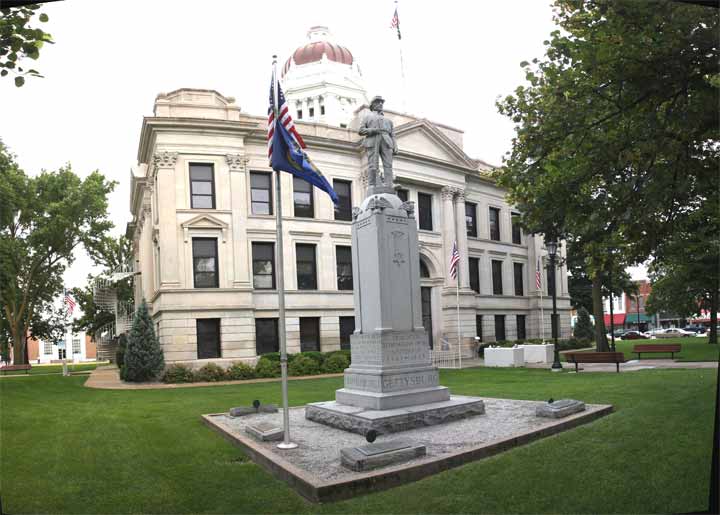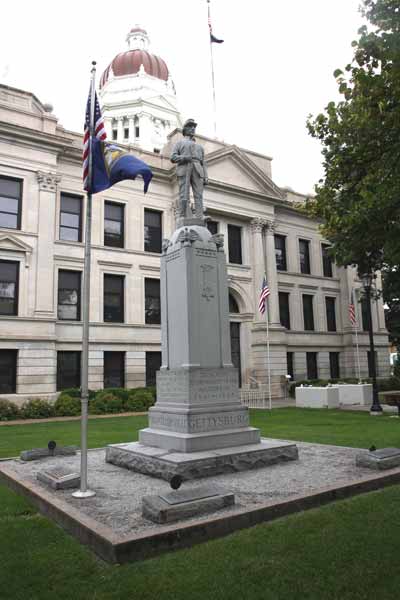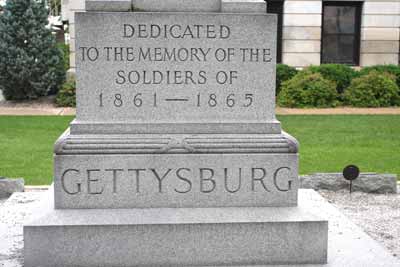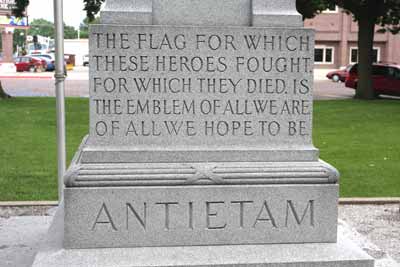Return to Simplicity: A Small Town Fourth
What follows are the images and
thoughts of a small town boy visiting the Fourth of July in his own
hometown. In this case, the boy is me and the hometown is Seward,Nebraska,
but do your best to forget both of those facts. Yes, it's a biased
bit of reportage, as is any form of individual story telling, but
stand back and try to imagine you're seeing this on TV or something
and judge it on it's own worth. It's more than a personal story.
It's what happens to every family on the Fourth. The lucky ones anyway.
First I'll try to set the stage
so you know what "small town" means and so you'll see why so much
of this is set in a surrounding that could have been the set for
"Back to the Future" or you expect to see Opie and Andy walking around
the square.
|
| The town is constructed around an honest-to-goodness
square, complete with stone courthouse, clock tower and requisite
civil war statue. The streets on two sides still have the original
bricks, this after tearing them up, putting down a new base and
replacing them. The other two sides are state highways so see
too much truck traffic for the bricks. More on the statue later. |
|
| Northside of the square, which is more
or less repeated on all four sides. The building facades are
as they were originally constructed, some going back to the 1880's,
most to the turn of the century. Only one section of the East
side is a modern building and it was built of brick and in a
style to match what's seen here so it isn't disruptive. Note
the brick streets. They are slicker'n a squashed gopher when
first rained on and bad for motorcycles. Ask me how I know. |
|
| West side and the main north and south
highway going through town. I could shoot stuff like this all
day and it would all look the same: a small town that is architecturally
frozen in time but still very progressive in all other areas. |
.
|
About that Civil War statue. If you cruise
the eastern half of the country you'll see the exact same statue,
or one nearly like it, in town squares both large and small. I
don't know when they started appearing, I'd guess around the turn
of the century, I've been told Seward's was erected in the
early 1930's. This would have been about the time the vets from
both sides were dying out and, in this case, the Daughters of the
GAR (Grand Army of the Republic) decided they should memorialize
them in some fashion. The biggest difference in the statues, town
to town, is that the inscriptions on the bottom are different:
they list different battles and have different sayings. I decided
to show a few pix of what Seward's statue has around the bottom
because the words have as much meaning today as they did the day
they were chiseled in the stone.
I wonder how many of Seward's current citizens have actually walked
around the statue and read what it says.
|
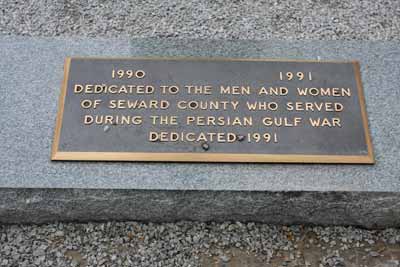 |
Nothing I can say is going to add to what they said so long ago. Seward,
however, continues the tradition by placing brass plaques around the
base, beginning with a tribute to WWI vets and ending with this one.
I remember so clearly as a kid being part of Veteran's Day services at
the cemetery north of town. I'd scramble in after they fired their salutes
and grab the spent 30-06 blanks putting them in my box of treasures.
In later years, I'd be at one end of the cemetery, with another trumpeter
at the other end, and we'd play taps in an echoing theme. It was very
effective and still sticks with me 50 years later. Seward is nothing,
if not patriotic and appreciative of its servicemen and women.
On with the Celebration:
GO
TO PAGE TWO
